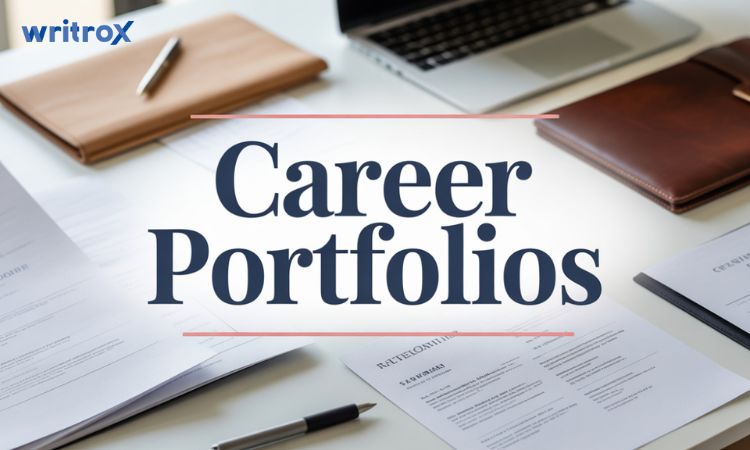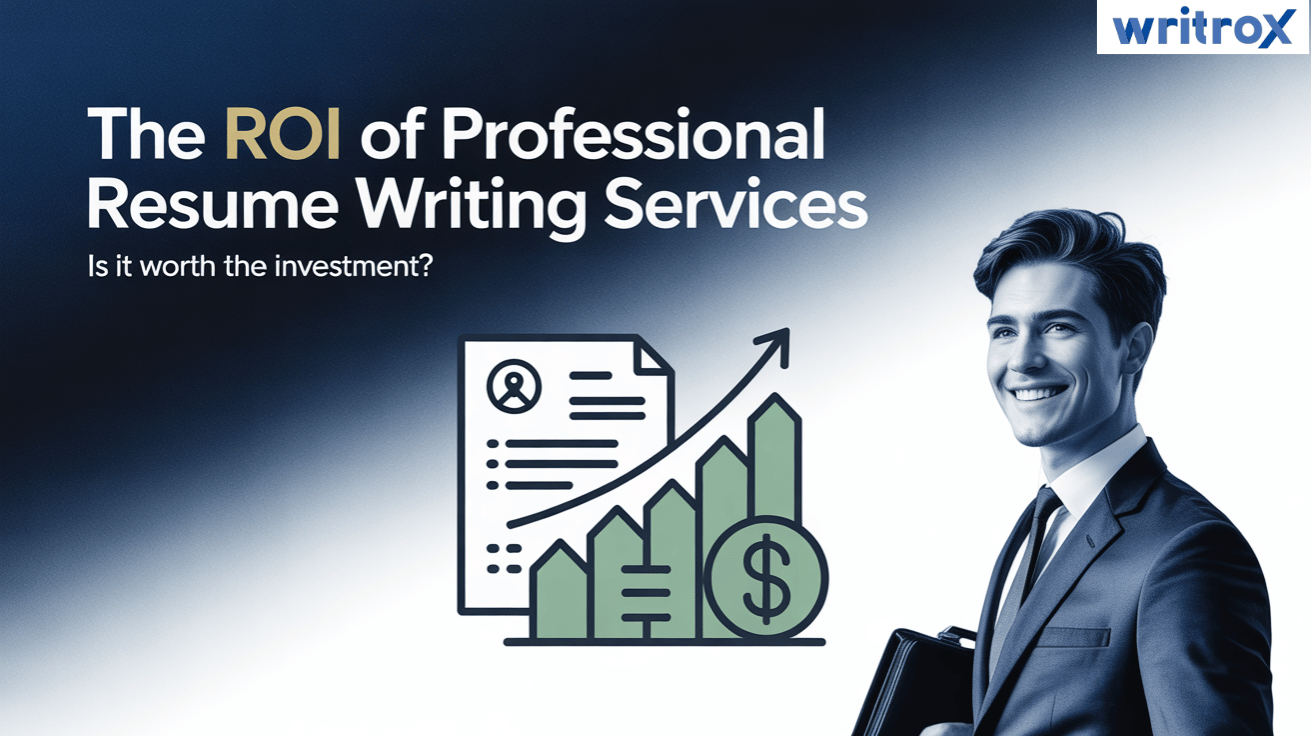In a crowded and competitive job market, your resume alone may no longer be enough to get noticed. While resumes provide a summary of your qualifications, they sometimes lack the depth needed to truly highlight your capabilities. Nowadays, employers, clients, as well as hiring managers are not actually interested in what you say you can do. Beyond that, they actually want to see your work, understand your thought process, and know the actual result you delivered.
So, that’s where a career portfolio becomes crucial. When it comes to a career portfolio, it actually goes beyond a resume by offering concrete examples of your work, detailed project outcomes, visuals, along with testimonials from real projects. In this blog, we’ll explore why creating one matters a lot and exactly how you can build it.
Also Read: Not Getting Interview Calls? Here’s What’s Really Stopping You
What Is a Career Portfolio? ding Text Here
A career portfolio is more than just a collection of papers. It’s a curated collection of your best professional work and biggest triumphs. In contrast to a resume that summarizes what you’ve achieved, a portfolio shows evidence.
A career portfolio may consist of:
- Work outputs and project briefs
- Numbers/evidence of measurable achievements (i.e. “Increased sales by 40%”)
- Case studies and in-depth project descriptions
- Testimonials or recommendations from clients or employers
- Relevant credentials like degrees and awards
- Presentations, publications or thought provoking pieces
- Coverage, media clips, screenshots
- Timeline of your career, or skills matrix
As a portfolio can exist as a PDF document, a personal website, a management platform like Notion, or as a dedicated section on LinkedIn, it should be in whatever form meets your goals.
Why Does a Career Portfolio Matter?
Now that we know what a career portfolio consists of, let’s find out how it impacts your recruitment.

1. Evidence over Possibility
Employers and clients want evidence. They want to see the outcomes, not just a title. A portfolio can answer questions like:
- What solutions have you designed or delivered?
- How do you approach challenges and problems?
- What verifiable results do you produce?
- Instead of providing generic bullet points, you will show your added value.
2. Gain a Competitive Advantage
Most professionals are still using only their resumes. When you have a well-crafted portfolio, you are able to set yourself apart immediately, highlighting credibility and intentionality. In fact, a portfolio has been shown to double your chances of getting interview calls especially for leadership and client-facing roles.
3. Have Better Conversations
Imagine being at an interview or pitching to a client. You not only talk about your skills. You must also show your skills in practice by mentioning specific projects you’ve worked on, discuss your results, and provide a visual that supports your story.
4. Personal Branding and Visibility
The short answer is: Before you actually need it. Don’t wait until you are in the middle of a job hunt or looking for a writing client – create your portfolio ahead of time.
Here are some key points when a portfolio becomes critical:
Career transitions: Whether you are changing jobs or moving industries, a portfolio shows that your skills are portable.
Mid or senior-level professionals: Mid or senior levels are expected to share the strategic impact that their work has had on a product or company. You must add meaningful contributions and community engagement, and not just a list of tasks accomplished.
Freelancers and consultants: You can start building trust immediately with potential clients by offering evidence of results, work samples/stories and/or testimonials from clients.
Performance reviews / promotion: This helps you develop the right approach for documenting your impact and contributions. It essentially demonstrates growth.
Public speaking engagements or professional panels: This section speaks for your leadership qualities and provides evidence of your expertise and experience.
How a Career Portfolio Differs from a Resume?
Let’s be clear. Your resume and portfolio are not interchangeable:
| Feature | Resume | Career Portfolio |
|---|---|---|
| Format | 1–2 pages, text-based summary | Multi-section, includes documents & visuals |
| Depth | Brief outline of career | In-depth proof, context, results |
| Flexibility | Standardized structure | Highly customizable |
| Use Case | Required for all applications | Used for verification, interviews, pitches |
| Typical Content | Work history, education, basic skills | Work samples, testimonials, case studies, visuals |
Step-by-Step Guide: Building an Effective Career Portfolio:
Let’s get started! Here’s how to build a portfolio that will work for you and not just collect digital dust.
1. Identify Your Purpose
Now before you go getting documents together, ask yourself:
- Who is my audience? (Employers, clients, partners)
- What do I want to achieve? (Job application, client pitch, internal review)
- How do I want to be perceived? (Leader, specialist, creative)
Your answers to these questions will help you determine your portfolio’s tone and character.
2. Organize Your Core Sections
You will want to structure the portfolio for maximum value. Here are some sections to consider putting in your portfolio:
About You: A short, compelling professional bio.
Key Skills: Real-life evidence to show you are a master.
Project Highlights: Select 3-5 projects that you found impactful. For each, include:
- Situation/context
- What you did
- Results (quantified)
- Challenges
Testimonials: Reviews and other considerations from managers, peers or clients.
Certification & Education: Include the ones that are relevant to the job you’re applying for. You can also aim to make a lasting impression by presenting your best achievements to the recruiters.
Media, Publications, or Workshops: Include these to exemplify your leadership skills.
3. Gather and Curate Your Materials
Here is what you should aggregate (but be clear in your focus):
- Your resume (certainly not the first time to have it included but you can do so when you update it)
- Samples of your best and most relevant work
- Copies of your degrees, certificates, and awards
- Letters of recommendation or positive email messages
- Any articles published, blog posts or even just things from social media (highlights will do)
- Screenshots, images, or charts that can help tell your story.
4. Add the Numbers. Show Outcomes.
Instead of simply stating the tasks you completed, you should:
- Highlight the metrics: “I helped reduce onboarding time by 40%.”
- Show the scale: “I quickly trained over 200 employees in 6 months, helping them become productive fast.”
- Focus on the impact: “I successfully led and managed a project worth $1M.”
The numbers elucidate your accomplishments; they make them tangible and persuasive.
5. Make It Visually Captivating (But also Clean!)
Remember, use infographic text formats sparingly:
- Graphs to show results
- Screenshots of projects (with commentary)
- Client’s logos (with permission)
- Slides or other visual material
- Your layout should look organized, and not like a cluttered mess.
6. Choose the Best Format
Be thoughtful about where and how you are going to present your portfolio:
- PDF deck: For interviews or client meetings
- A personal website or blog: Suited to building your brand
- The featured section of LinkedIn: Good for visibility and easy to keep current
- Notion or portfolio platforms: Easily updated and can share in real (not client) time
Find what fits your profession and is sustainable for you.
7. Update Regularly!
- Put a recurring reminder (maybe quarterly) to current projects and testimonials
- Update skills or certifications
- Take out samples that are old or less relevant
Having an up-to-date portfolio means you will always be ready for opportunities.
Bonus Tips: Boost Your Resume with Professional Services
If you are serious about making a good first impression on a prospective employer, joining your portfolio with a professionally created resume can open even more doors. Resume writing services like Writrox, and others can provide you a variety of options to:
- Develop ATS-supported, results-focused resumes
- Write customized cover letters
- Professionalize a LinkedIn profile
- Communicating the story of your career in an effective and powerful way
The option of working with a professional will:
- Save you time,
- Ensure your documents are generated to industry standards, and
- Allow you to invest in your personal brand credibility.
Conclusion:
The job market is intensely competitive in today’s world. This is where a great career portfolio can add proof to your potential and differentiate you from the crowd. It provides further dimensions to your career evolution over a lifetime and highlights your achievements for the recruiters.
With the help of professional resume writing services, start today and build your professional story. Curate it, create it, and own your next opportunity with confidence!













